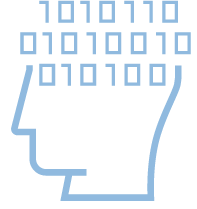
Abstract
Since their release, both the Computer Science Ontology and the CSO Classifier have received growing attention. They are being employed within several applications and proved to effectively support a wide range of tasks, including trend analysis, enhancing metadata, and assessing impact.
1. Introduction
The Computer Science Ontology (CSO) is a comprehensive ontology of research areas in the field of Computer Science. It was automatically constructed using the Klink-2 algorithm [1] on the Rexplore dataset, comprising roughly 16 million publications. The Klink-2 algorithm employs a combination of semantic technologies, machine learning, and external knowledge sources to generate a fully populated ontology of research areas. Additionally, some relationships within the ontology were manually refined by experts during the preparation of two ontology-assisted surveys in the fields of Semantic Web and Software Architecture. While the primary root of the CSO is Computer Science, the ontology also encompasses a few secondary roots, such as Linguistics, Geometry, and Semantics.
Categorising research artefact according to the Computer Science Ontology represents a natural step to facilitate broader adoption of the CSO by users across various domains. Indeed, classifying research papers according to their CSO topics is crucial for enhancing their discoverability, enabling intelligent analytics, and facilitating various methods to analyse and understand the research landscape. For this we developed the CSO Classifier, an unsupervised method designed to automatically classify research artefacts leveraging CSO.
The CSO Classifier operates by taking the metadata of a research paper (title, abstract, and keywords) and producing a set of relevant research concepts selected from CSO. It comprises two key components: a syntactic module and a semantic module. The syntactic module analyses the input documents and identifies CSO concepts that are explicitly mentioned within them. In contrast, the semantic module employs part-of-speech tagging to pinpoint potentially relevant terms and then utilises word embeddings to deduce semantically connected topics. Finally, the CSO Classifier integrates the outcomes from both modules, eliminates any outliers, and enriches the results by incorporating pertinent super-areas.
Since their release, both the Computer Science Ontology and the CSO Classifier have received growing attention. In this report, we outline the main tasks for which both CSO and CSO Classifier have played a crucial and impactful role.
The next sections outline our approach to evaluating their impact and provides a comprehensive overview of their diverse applications, emphasising their crucial role in facilitating research and knowledge advancement.
2. Analysis of Impact
We have explored the literature to identify all potential uses of both CSO and CSO Classifier. For this, we employed Google Scholar, as the most comprehensive dataset in reference coverage, and we adopted the forward-snowballing technique, a systematic approach used to identify relevant literature by exploring the papers citing a set of initial publications (also known as seed papers).
Our initial set consisted of five papers related to CSO and CSO Classifier. Here are reported:
- Salatino, A.A., Thanapalasingam, T., Mannocci, A., Osborne, F. and Motta, E., 2018. The computer science ontology: a large-scale taxonomy of research areas. In The Semantic Web–ISWC 2018: 17th International Semantic Web Conference, Monterey, CA, USA, October 8–12, 2018, Proceedings, Part II 17 (pp. 187-205). Springer International Publishing.
- Salatino, A.A., Osborne, F., Thanapalasingam, T. and Motta, E., 2019. The CSO classifier: Ontology-driven detection of research topics in scholarly articles. In Digital Libraries for Open Knowledge: 23rd International Conference on Theory and Practice of Digital Libraries, TPDL 2019, Oslo, Norway, September 9-12, 2019, Proceedings 23 (pp. 296-311). Springer International Publishing.
- Salatino, A.A., Thanapalasingam, T., Mannocci, A., Birukou, A., Osborne, F. and Motta, E., 2020. The computer science ontology: A comprehensive automatically-generated taxonomy of research areas. Data Intelligence, 2(3), pp.379-416.
- Salatino, A., Osborne, F. and Motta, E., 2022. Cso classifier 3.0: a scalable unsupervised method for classifying documents in terms of research topics. International Journal on Digital Libraries, pp.1-20.
- Salatino, A., Thanapalasingam, T., Mannocci, A., Osborne, F. and Motta, E., 2018. Classifying research papers with the computer science ontology. In CEUR WORKSHOP PROCEEDINGS (Vol. 2180). CEUR-WS.
3. Usage of CSO
Here we outline the various uses of the Computer Science Ontology and the CSO Classifier organised into distinct use cases, along with relevant references for further exploration.
3.1. Generating Knowledge Graphs
Knowledge graphs provide a structured representation of knowledge, and the CSO offers a standardised vocabulary and structure to represent computer science concepts, enabling the creation of interoperable and rich knowledge graphs in this domain. Examples include Temporal KG [2], AIDA KG [3], [4], AI KG [5], CS KG [6], and others like [7].
3.2. Exploring and Analysing Scholarly Data
The CSO can classify research papers based on their topics, methods, and contributions, facilitating more focused exploration and analysis of scholarly data, and enabling linking research papers to other relevant data sources. Notable examples include: Rexplore [8], ScholarLensViz [9], ConceptScope [10], scientific influence [11], and others [12], [13], [14].
3.3. Developing New Ontologies
The CSO serves as a foundation for building new ontologies in specific subfields of computer science, providing a core set of concepts and relationships that can be extended and specialised. For instance, Explanation Ontology [15], Extended CSO [16], or towards more ambitious endeavours like the multi-field comprehensive Knowledge Organisation System [17].
3.4. Improving Metadata Quality for Information Retrieval
The CSO Classifier can automatically annotate documents with relevant computer science concepts, improving metadata quality and enabling more precise information retrieval. Some examples include R-Classify [18], SmartTopicMiner [19], [20], and others like [21], [22], [23], [24], [25], [26], [27], [28]. Specifically, the SmartTopicMiner is routinely employed by the Springer Nature editorial team for classifying proceedings books and improving the quality of their metadata.
3.5. Annotating Documents Beyond the Research Domain
The CSO provides a standardised vocabulary for annotating documents from diverse sources, enabling cross-domain information retrieval and analysis. Examples of annotations include press releases [29], YouTube videos [30], collections at IT museums [31], job advertisements [32].
3.6. Annotating Research Software
The CSO Classifier can annotate research software with relevant concepts like algorithms and data structures, facilitating its discovery and reuse [33].
3.7. Inspiring Development of Similar Technologies Beyond Computer Science
The structure and principles of the CSO can be adapted to create ontologies and knowledge graphs in other domains like food safety [34].
3.8. Analysing Journals and Conferences
The CSO can support the analysis of topics covered by journals and conferences, identify their areas of expertise, and track their evolution over time. Notable examples include the AIDA Dashboard [35], AIDA Bot [36].
3.9. Detecting Research Communities
The CSO can support the analysis of co-authorship and citation patterns to reveal underlying research communities and their areas of focus. For instance the Temporal Semantic Topic-Based Clustering [37], Research Communities Map Builder [38].
3.10. Modelling, Identifying, and Recommending Domain Experts
The CSO can support modelling the expertise of researchers based on their publications and other activities, enabling the identification and recommendation of domain experts. For instance VeTo [39], ACE 2.0 [40], Grapevine [41], and others [42], [43].
3.11. Completing Scientific Facts and Hypothesis Generation
The CSO can support reasoning over existing knowledge and suggest potential completions or hypotheses based on established relationships between concepts. An example is SciCheck [44].
3.12. Recommending Articles and Video Lessons
The CSO can support analysing users’ interests and recommend relevant content based on semantic similarity to the user’s profile. Examples include recommending scientific volumes, like Smart Book Recommender [43], or video lessons [44].
3.13. Analysing the Flow of Knowledge Between Academia and Industry
The CSO can support tracking the movement of ideas and technologies between academia and industry, revealing patterns of collaboration and knowledge transfer. For instance ResearchFlow [45], and others [46].
3.14. Analysing the Diversity of Expertise Within Research Teams and Their Attained Impact
The CSO can support the analysis of the expertise of researchers within teams and assess their diversity, providing insights into the relationship between diversity and research impact [47].
3.15. Improving Understanding
The CSO can help generating explanations of computer science concepts and disambiguate user queries, improving understanding and facilitating communication. For instance developing explanations [48], clarifying user intent [49].
3.16. Developing Topic Models
The CSO can provide a semantic backbone for topic models, enhancing their interpretability and facilitating the discovery of meaningful topics in computer science literature. For instance CoCoNoW [50].
3.17. Forecasting Academic Impact
Predicting the future impact of research publications is valuable for funding agencies, institutions, and researchers. The CSO can support the development of models that leverage citation networks, topic trends, and author influence to forecast academic impact. For instance ArtSim [51], and Augur [52].
3.18. Forecasting Research Topics
Identifying emerging research areas helps researchers and institutions stay ahead of the curve. The CSO, with its ability to capture the semantic relationships between concepts, can support the analysis of publication trends and the identification of emerging research topics. For instance Augur [52], ARPISB [53].
3.19. Forecasting Ontology Concepts
Ontologies evolve as new knowledge and technologies emerge. The CSO, as a foundational ontology for computer science, can be used to analyse usage patterns, identify gaps, and anticipate future concept additions or modifications within the ontology itself. For instance SIM [54], Pragmatic Ontology Evolution [55].
3.20. Forecasting Technology Adoption
Predicting the adoption and impact of new technologies is crucial for strategic planning in both industry and academia. The CSO can support the development of models that analyse publication trends, patent filings, and other data sources to forecast technology adoption. For instance TTF [56], TechMiner [57].
4. Conclusion
In conclusion, this report has highlighted the growing significance of CSO and the CSO Classifier within the research community and beyond. We have outlined our methodology for assessing their impact and presented a comprehensive overview of their diverse applications. The CSO, as a comprehensive ontology of research areas in Computer Science, has proven instrumental in organising and navigating the vast landscape of computer science knowledge. The CSO Classifier, with its ability to automatically classify research artefacts based on the CSO, has further enhanced the accessibility and discoverability of research papers. Together, they have facilitated intelligent analytics and supported a variety of approaches for analysing and making sense of the research environment.
As the field of Computer Science continues to evolve and expand, the CSO and the CSO Classifier will undoubtedly remain valuable tools for researchers, educators, and practitioners. Their capacity to organise, classify, and analyse research artefacts will continue to support new innovative tasks.
References
[1] F. Osborne and E. Motta, ‘Klink-2: Integrating Multiple Web Sources to Generate Semantic Topic Networks’, in The Semantic Web – ISWC 2015, vol. 9366, M. Arenas, O. Corcho, E. Simperl, M. Strohmaier, M. d’Aquin, K. Srinivas, P. Groth, M. Dumontier, J. Heflin, K. Thirunarayan, K. Thirunarayan, and S. Staab, Eds., in Lecture Notes in Computer Science, vol. 9366. , Cham: Springer International Publishing, 2015, pp. 408–424. doi: 10.1007/978-3-319-25007-6_24.
[2] A. Rossanez, J. Reis, and R. D. S. Torres, ‘Representing Scientific Literature Evolution via Temporal Knowledge Graphs’, CEUR Workshop Proc., 2020, Accessed: Jun. 19, 2024. [Online]. Available: https://ntnuopen.ntnu.no/ntnu-xmlui/handle/11250/2773742
[3] S. Angioni, A. Salatino, F. Osborne, D. R. Recupero, and E. Motta, ‘AIDA: A knowledge graph about research dynamics in academia and industry’, Quant. Sci. Stud., vol. 2, no. 4, pp. 1356–1398, Dec. 2021, doi: 10.1162/qss_a_00162.
[4] S. Angioni, A. A. Salatino, F. Osborne, D. R. Recupero, and E. Motta, ‘Integrating Knowledge Graphs for Analysing Academia and Industry Dynamics’, in ADBIS, TPDL and EDA 2020 Common Workshops and Doctoral Consortium, L. Bellatreche, M. Bieliková, O. Boussaïd, B. Catania, J. Darmont, E. Demidova, F. Duchateau, M. Hall, T. Merčun, B. Novikov, C. Papatheodorou, T. Risse, O. Romero, L. Sautot, G. Talens, R. Wrembel, and M. Žumer, Eds., Cham: Springer International Publishing, 2020, pp. 219–225. doi: 10.1007/978-3-030-55814-7_18.
[5] D. Dessì, F. Osborne, D. Reforgiato Recupero, D. Buscaldi, E. Motta, and H. Sack, ‘AI-KG: An Automatically Generated Knowledge Graph of Artificial Intelligence’, in The Semantic Web – ISWC 2020, J. Z. Pan, V. Tamma, C. d’Amato, K. Janowicz, B. Fu, A. Polleres, O. Seneviratne, and L. Kagal, Eds., Cham: Springer International Publishing, 2020, pp. 127–143. doi: 10.1007/978-3-030-62466-8_9.
[6] D. Dessí, F. Osborne, D. Reforgiato Recupero, D. Buscaldi, and E. Motta, ‘CS-KG: A Large-Scale Knowledge Graph of Research Entities and Claims in Computer Science’, in The Semantic Web – ISWC 2022, U. Sattler, A. Hogan, M. Keet, V. Presutti, J. P. A. Almeida, H. Takeda, P. Monnin, G. Pirrò, and C. d’Amato, Eds., Cham: Springer International Publishing, 2022, pp. 678–696. doi: 10.1007/978-3-031-19433-7_39.
[7] S. Gardasevic and R. Gazan, ‘Community Design of a Knowledge Graph to Support Interdisciplinary PhD Students’, in Information for a Better World: Normality, Virtuality, Physicality, Inclusivity, vol. 13972, I. Sserwanga, A. Goulding, H. Moulaison-Sandy, J. T. Du, A. L. Soares, V. Hessami, and R. D. Frank, Eds., in Lecture Notes in Computer Science, vol. 13972. , Cham: Springer Nature Switzerland, 2023, pp. 473–490. doi: 10.1007/978-3-031-28032-0_36.
[8] F. Osborne, E. Motta, and P. Mulholland, ‘Exploring Scholarly Data with Rexplore’, in Advanced Information Systems Engineering, vol. 7908, C. Salinesi, M. C. Norrie, and Ó. Pastor, Eds., in Lecture Notes in Computer Science, vol. 7908. , Berlin, Heidelberg: Springer Berlin Heidelberg, 2013, pp. 460–477. doi: 10.1007/978-3-642-41335-3_29.
[9] F. Loffler et al., ‘ScholarLensViz: A Visualization Framework for Transparency in Semantic User Profiles’.
[10] X. Zhang, S. Chandrasegaran, and K.-L. Ma, ‘ConceptScope: Organizing and Visualizing Knowledge in Documents based on Domain Ontology’, in Proceedings of the 2021 CHI Conference on Human Factors in Computing Systems, Yokohama Japan: ACM, May 2021, pp. 1–13. doi: 10.1145/3411764.3445396.
[11] J. P. Wahle, T. Ruas, M. Abdalla, B. Gipp, and S. M. Mohammad, ‘We are Who We Cite: Bridges of Influence Between Natural Language Processing and Other Academic Fields’, in Proceedings of the 2023 Conference on Empirical Methods in Natural Language Processing, 2023, pp. 12896–12913. doi: 10.18653/v1/2023.emnlp-main.797.
[12] P. Lula, O. Dospinescu, D. Homocianu, and N.-A. Sireteanu, ‘An Advanced Analysis of Cloud Computing Concepts Based on the Computer Science Ontology’, Comput. Mater. Contin., vol. 66, no. 3, pp. 2425–2443, 2021, doi: 10.32604/cmc.2021.013771.
[13] P. Ajwani and H. A. Arolkar, ‘Semantic Enrichment Tool for Implementing Learning Mechanism for Trend Analysis’, in Data Science and Intelligent Applications, K. Kotecha, V. Piuri, H. N. Shah, and R. Patel, Eds., Singapore: Springer, 2021, pp. 535–543. doi: 10.1007/978-981-15-4474-3_58.
[14] P. Kathiria and H. Arolkar, ‘Trend analysis and forecasting of publication activities by Indian computer science researchers during the period of 2010–23’, Expert Syst., vol. 39, no. 10, p. e13070, Dec. 2022, doi: 10.1111/exsy.13070.
[15] S. Chari et al., ‘Explanation Ontology: A general-purpose, semantic representation for supporting user-centered explanations’, Semantic Web, pp. 1–31, May 2023, doi: 10.3233/SW-233282.
[16] N. C. Santosa, J. Miyazaki, and H. Han, ‘Automating Computer Science Ontology Extension With Classification Techniques’, IEEE Access, vol. 9, pp. 161815–161833, 2021, doi: 10.1109/ACCESS.2021.3131627.
[17] A. Salatino, T. Aggarwal, A. Mannocci, F. Osborne, and E. Motta, ‘A Survey on Knowledge Organization Systems of Research Fields: Resources and Challenges’, Sep. 06, 2024, arXiv: arXiv:2409.04432. doi: 10.48550/arXiv.2409.04432.
[18] T. Aggarwal, A. Salatino, F. Osborne, and E. Motta, ‘R-classify: Extracting research papers’ relevant concepts from a controlled vocabulary’, Softw. Impacts, vol. 14, p. 100444, Dec. 2022, doi: 10.1016/j.simpa.2022.100444.
[19] A. A. Salatino, F. Osborne, A. Birukou, and E. Motta, ‘Improving Editorial Workflow and Metadata Quality at Springer Nature’, in The Semantic Web – ISWC 2019, C. Ghidini, O. Hartig, M. Maleshkova, V. Svátek, I. Cruz, A. Hogan, J. Song, M. Lefrançois, and F. Gandon, Eds., Cham: Springer International Publishing, 2019, pp. 507–525. doi: 10.1007/978-3-030-30796-7_31.
[20] F. Osborne, A. Salatino, A. Birukou, and E. Motta, ‘Automatic Classification of Springer Nature Proceedings with Smart Topic Miner’, in The Semantic Web – ISWC 2016, P. Groth, E. Simperl, A. Gray, M. Sabou, M. Krötzsch, F. Lecue, F. Flöck, and Y. Gil, Eds., Cham: Springer International Publishing, 2016, pp. 383–399. doi: 10.1007/978-3-319-46547-0_33.
[21] A. Sharma and S. Kumar, ‘Machine learning and ontology-based novel semantic document indexing for information retrieval’, Comput. Ind. Eng., vol. 176, p. 108940, Feb. 2023, doi: 10.1016/j.cie.2022.108940.
[22] ‘Attention–Survival Score: A Metric to Choose Better Keywords and Improve Visibility of Information’. Accessed: Jun. 19, 2024. [Online]. Available: https://www.mdpi.com/1999-4893/16/4/196
[23] S. Malik and S. Jain, ‘Deep Convolutional Neural Network for Knowledge-Infused Text Classification’, New Gener. Comput., vol. 42, no. 1, pp. 157–176, Mar. 2024, doi: 10.1007/s00354-024-00245-6.
[24] M. Mardiah, A. Annisa, and S. N. Neyman, ‘Aggregate Functions in Categorical Data Skyline Search (CDSS) for Multi-keyword Document Search’, Khazanah Inform. J. Ilmu Komput. Dan Inform., vol. 9, no. 1, Art. no. 1, Apr. 2023, doi: https://doi.org/10.23917/khif.v9i1.18127.
[25] A. Sharma and S. Kumar, ‘Shallow Neural Network and Ontology-Based Novel Semantic Document Indexing for Information Retrieval’, Intell. Autom. Soft Comput., vol. 34, no. 3, pp. 1989–2005, 2022, doi: 10.32604/iasc.2022.026095.
[26] A. Hannousse and S. Yahiouche, ‘A Semi-automatic Document Screening System for Computer Science Systematic Reviews’, in Pattern Recognition and Artificial Intelligence, C. Djeddi, I. Siddiqi, A. Jamil, A. Ali Hameed, and İ. Kucuk, Eds., Cham: Springer International Publishing, 2022, pp. 201–215. doi: 10.1007/978-3-031-04112-9_15.
[27] S. Vahidnia, A. Abbasi, and H. Abbass, ‘A temporal ontology guided clustering methodology with a case study on detection and tracking of artificial intelligence topics’, Expert Syst. Appl., vol. 247, p. 123279, Aug. 2024, doi: 10.1016/j.eswa.2024.123279.
[28] A. Hannousse, ‘Searching relevant papers for software engineering secondary studies: Semantic Scholar coverage and identification role’, IET Softw., vol. 15, no. 1, pp. 126–146, 2021, doi: 10.1049/sfw2.12011.
[29] M. El Ghosh, N. Delestre, J.-P. Kotowicz, C. Zanni-Merk, and H. Abdulrab, ‘RelTopic: A graph-based semantic relatedness measure in topic ontologies and its applicability for topic labeling of old press articles’, Semantic Web, vol. 14, no. 2, pp. 293–321, Jan. 2023, doi: 10.3233/SW-222919.
[30] P. Ajwani and H. A. Arolkar, ‘Classification of Domains in Computer Science Using Random Forest Algorithm for YouTube Dataset’, in Second International Conference on Image Processing and Capsule Networks, J. I.-Z. Chen, J. M. R. S. Tavares, A. M. Iliyasu, and K.-L. Du, Eds., Cham: Springer International Publishing, 2022, pp. 662–670. doi: 10.1007/978-3-030-84760-9_56.
[31] C. Djambian and M. Rossi, ‘New Terminological Approaches for New Heritages and Corpora: The ITinHeritage Project’.
[32] F. Derksen and J. Dörpinghaus, ‘Digitalization and Sustainability in German Continuing Education’.
[33] J. T. Ciuciu-Kiss, ‘A methodology for research software classification’, masters, E.T.S. de Ingenieros Informáticos (UPM), 2022. Accessed: Jun. 19, 2024. [Online]. Available: https://oa.upm.es/71376/
[34] P. Sowinski, K. Wasielewska-Michniewska, M. Ganzha, and M. Paprzycki, ‘Topical Classification of Food Safety Publications with a Knowledge Base’, in Sustainable Technology and Advanced Computing in Electrical Engineering, V. Mahajan, A. Chowdhury, N. P. Padhy, and F. Lezama, Eds., Singapore: Springer Nature, 2022, pp. 673–693. doi: 10.1007/978-981-19-4364-5_48.
[35] S. Angioni, A. Salatino, F. Osborne, A. Birukou, D. R. Recupero, and E. Motta, ‘Leveraging Knowledge Graph Technologies to Assess Journals and Conferences at Springer Nature’, in The Semantic Web – ISWC 2022, U. Sattler, A. Hogan, M. Keet, V. Presutti, J. P. A. Almeida, H. Takeda, P. Monnin, G. Pirrò, and C. d’Amato, Eds., Cham: Springer International Publishing, 2022, pp. 735–752. doi: 10.1007/978-3-031-19433-7_42.
[36] ‘Integrating Conversational Agents and Knowledge Graphs Within the Scholarly Domain | IEEE Journals & Magazine | IEEE Xplore’. Accessed: Jun. 19, 2024. [Online]. Available: https://ieeexplore.ieee.org/abstract/document/10061222
[37] F. Osborne, G. Scavo, and E. Motta, ‘Identifying Diachronic Topic-Based Research Communities by Clustering Shared Research Trajectories’, in The Semantic Web: Trends and Challenges, vol. 8465, V. Presutti, C. d’Amato, F. Gandon, M. d’Aquin, S. Staab, and A. Tordai, Eds., in Lecture Notes in Computer Science, vol. 8465. , Cham: Springer International Publishing, 2014, pp. 114–129. doi: 10.1007/978-3-319-07443-6_9.
[38] F. Osborne, G. Scavo, and E. Motta, ‘A Hybrid Semantic Approach to Building Dynamic Maps of Research Communities’, in Knowledge Engineering and Knowledge Management, K. Janowicz, S. Schlobach, P. Lambrix, and E. Hyvönen, Eds., Cham: Springer International Publishing, 2014, pp. 356–372. doi: 10.1007/978-3-319-13704-9_28.
[39] T. Vergoulis, S. Chatzopoulos, T. Dalamagas, and C. Tryfonopoulos, ‘VeTo: Expert Set Expansion in Academia’, in Digital Libraries for Open Knowledge, M. Hall, T. Merčun, T. Risse, and F. Duchateau, Eds., Cham: Springer International Publishing, 2020, pp. 48–61. doi: 10.1007/978-3-030-54956-5_4.
[40] S. T. R. Rizvi, S. Ahmed, and A. Dengel, ‘ACE 2.0: A Comprehensive tool for automatic extraction, analysis, and digital profiling of the researchers in Scientific Communities’, Soc. Netw. Anal. Min., vol. 13, no. 1, p. 81, May 2023, doi: 10.1007/s13278-023-01085-w.
[41] B. Rahdari, P. Brusilovsky, and A. Javadian Sabet, ‘Connecting Students with Research Advisors Through User-Controlled Recommendation’, in Proceedings of the 15th ACM Conference on Recommender Systems, in RecSys ’21. New York, NY, USA: Association for Computing Machinery, Sep. 2021, pp. 745–748. doi: 10.1145/3460231.3478879.
[42] T. Viard, H. Soldano, and G. Santini, ‘Exploring and Mining Attributed Sequences of Interactions’, in Complex Networks and Their Applications XI, H. Cherifi, R. N. Mantegna, L. M. Rocha, C. Cherifi, and S. Micciche, Eds., Cham: Springer International Publishing, 2023, pp. 537–549. doi: 10.1007/978-3-031-21131-7_42.
[43] I. Konstantinidis, M. Maragoudakis, I. Magnisalis, C. Berberidis, and V. Peristeras, ‘Knowledge-driven Unsupervised Skills Extraction for Graph-based Talent Matching’, in Proceedings of the 12th Hellenic Conference on Artificial Intelligence, Corfu Greece: ACM, Sep. 2022, pp. 1–7. doi: 10.1145/3549737.3549769.
[44] A. Borrego et al., ‘Completing Scientific Facts in Knowledge Graphs of Research Concepts’, IEEE Access, vol. 10, pp. 125867–125880, 2022, doi: 10.1109/ACCESS.2022.3220241.
[45] A. Salatino, F. Osborne, and E. Motta, ‘ResearchFlow: Understanding the Knowledge Flow Between Academia and Industry’, in Knowledge Engineering and Knowledge Management, C. M. Keet and M. Dumontier, Eds., Cham: Springer International Publishing, 2020, pp. 219–236. doi: 10.1007/978-3-030-61244-3_16.
[46] M. Abdalla et al., ‘The Elephant in the Room: Analyzing the Presence of Big Tech in Natural Language Processing Research’, in Proceedings of the 61st Annual Meeting of the Association for Computational Linguistics (Volume 1: Long Papers), 2023, pp. 13141–13160. doi: 10.18653/v1/2023.acl-long.734.
[47] A. Salatino, S. Angioni, F. Osborne, D. R. Recupero, and E. Motta, ‘Diversity of Expertise is Key to Scientific Impact: a Large-Scale Analysis in the Field of Computer Science’, Jun. 30, 2023, arXiv: arXiv:2306.15344. doi: 10.48550/arXiv.2306.15344.
[48] A. Halilovic and F. Lindner, ‘Visuo-Textual Explanations of a Robot’s Navigational Choices’, in Companion of the 2023 ACM/IEEE International Conference on Human-Robot Interaction, Stockholm Sweden: ACM, Mar. 2023, pp. 531–535. doi: 10.1145/3568294.3580141.
[49] A.-P. Härkönen, ‘Computationally clarifying user intent for improved question answering’.
[50] M. Beck, S. T. R. Rizvi, A. Dengel, and S. Ahmed, ‘From Automatic Keyword Detection to Ontology-Based Topic Modeling’, in Document Analysis Systems, X. Bai, D. Karatzas, and D. Lopresti, Eds., Cham: Springer International Publishing, 2020, pp. 451–465. doi: 10.1007/978-3-030-57058-3_32.
[51] S. Chatzopoulos, T. Vergoulis, I. Kanellos, T. Dalamagas, and C. Tryfonopoulos, ‘ArtSim: Improved Estimation of Current Impact for Recent Articles’, in ADBIS, TPDL and EDA 2020 Common Workshops and Doctoral Consortium, L. Bellatreche, M. Bieliková, O. Boussaïd, B. Catania, J. Darmont, E. Demidova, F. Duchateau, M. Hall, T. Merčun, B. Novikov, C. Papatheodorou, T. Risse, O. Romero, L. Sautot, G. Talens, R. Wrembel, and M. Žumer, Eds., Cham: Springer International Publishing, 2020, pp. 323–334. doi: 10.1007/978-3-030-55814-7_27.
[52] A. A. Salatino, F. Osborne, and E. Motta, ‘AUGUR: Forecasting the Emergence of New Research Topics’, in Proceedings of the 18th ACM/IEEE on Joint Conference on Digital Libraries, in JCDL ’18. New York, NY, USA: Association for Computing Machinery, May 2018, pp. 303–312. doi: 10.1145/3197026.3197052.
[53] J. Wu et al., ‘Emerging Scientific Topic Discovery by Analyzing Reliable Patterns of Infrequent Synonymous Biterms’, IEEE Trans. Emerg. Top. Comput. Intell., vol. 8, no. 1, pp. 752–761, Feb. 2024, doi: 10.1109/TETCI.2023.3266944.
[54] A. E. Cano-Basave, F. Osborne, and A. A. Salatino, ‘Ontology Forecasting in Scientific Literature: Semantic Concepts Prediction Based on Innovation-Adoption Priors’, in Knowledge Engineering and Knowledge Management, E. Blomqvist, P. Ciancarini, F. Poggi, and F. Vitali, Eds., Cham: Springer International Publishing, 2016, pp. 51–67. doi: 10.1007/978-3-319-49004-5_4.
[55] F. Osborne and E. Motta, ‘Pragmatic Ontology Evolution: Reconciling User Requirements and Application Performance’, in The Semantic Web – ISWC 2018, D. Vrandečić, K. Bontcheva, M. C. Suárez-Figueroa, V. Presutti, I. Celino, M. Sabou, L.-A. Kaffee, and E. Simperl, Eds., Cham: Springer International Publishing, 2018, pp. 495–512. doi: 10.1007/978-3-030-00671-6_29.


 Scholarly Knowledge Mining
Scholarly Knowledge Mining
 Digital Humanities
Digital Humanities
 Data Science
Data Science
 Smart Cities and Robotics
Smart Cities and Robotics